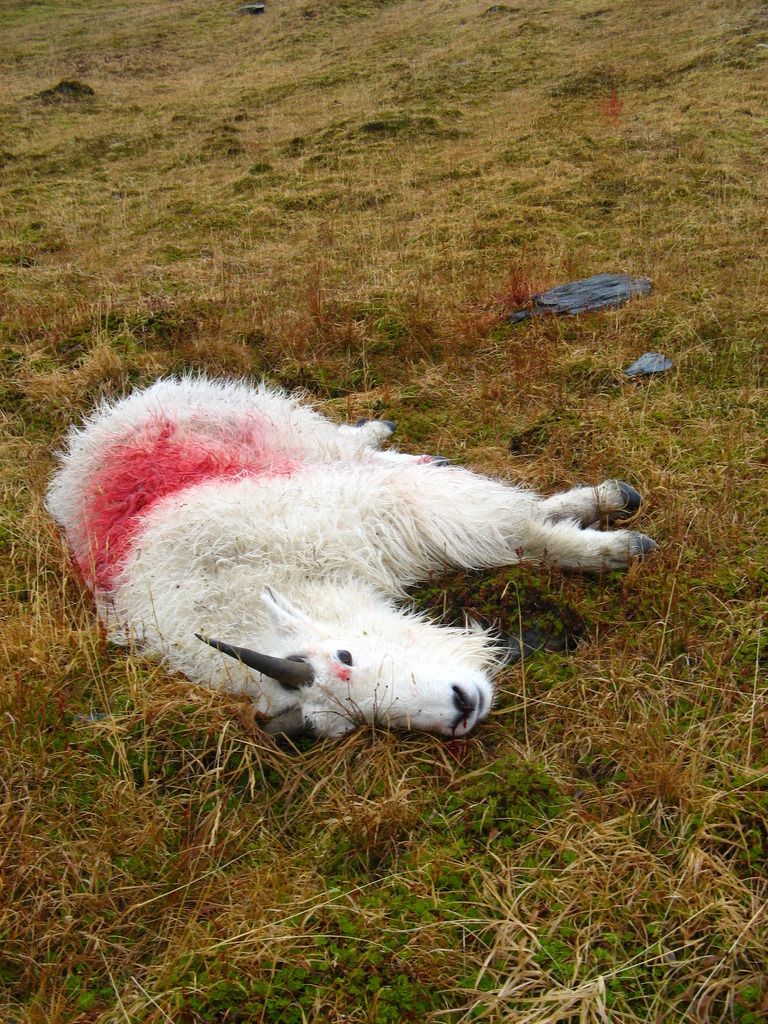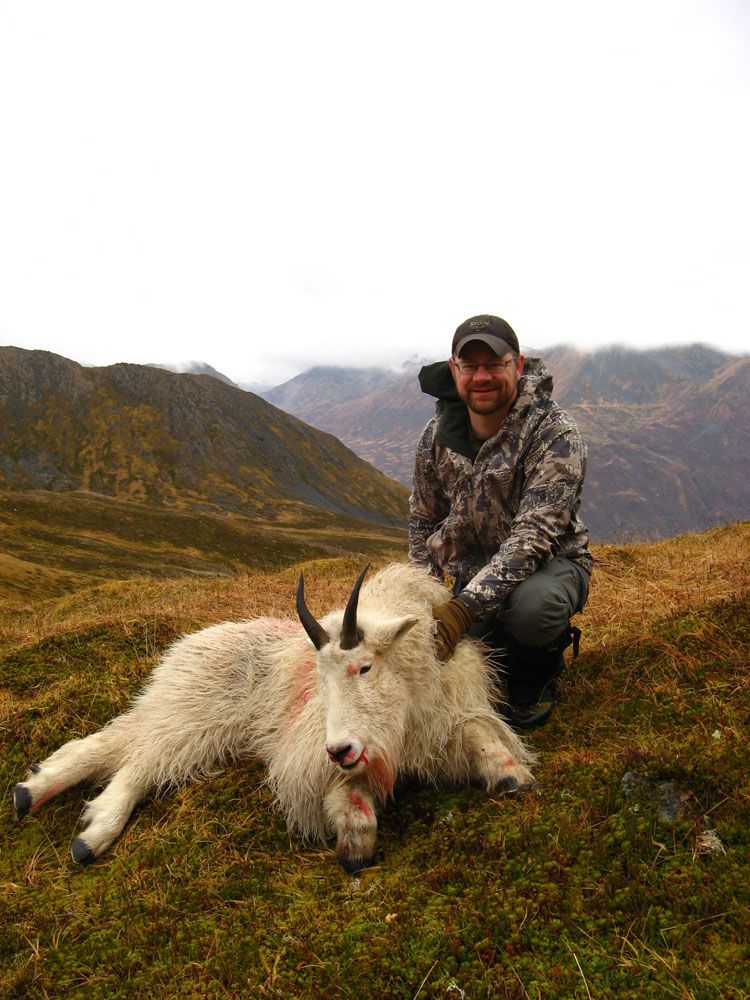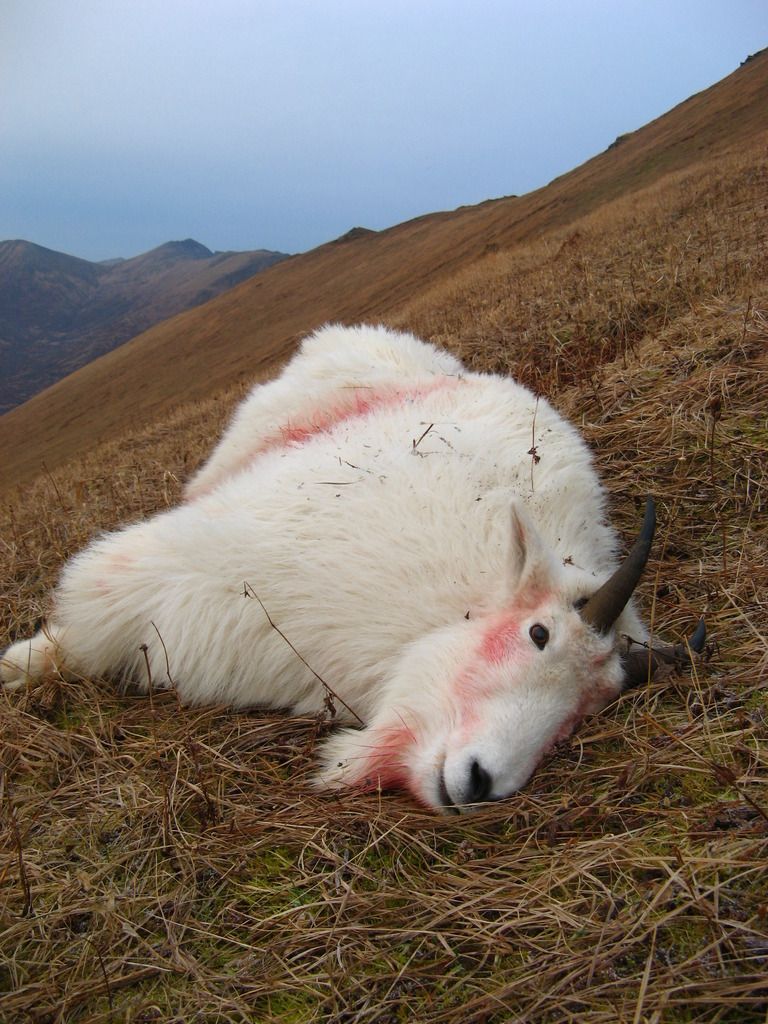I haven't really goat hunted, but wasn't there a story on here recently of a girl shooting a goat with a 243 using an 80gr bullet?
Sounds like an urban legend! What kinda dude would send his children out for goats way under-gunned?

Kidding aside I agree with others - goats can seem to take a shot or two and still be standing. These are the goat kills I've been in on (in order):
7-08 with 140gr Federal hot cores 100 yards - 1 shot to boiler room...went down in a couple seconds.
7mm rem mag with 150gr Federals loaded with hotcores 300 yards - 1 shot quatering too, goat was bedded at the shot he pushed his frontend up then rolled down the hill.
Archery hard quatering away, 1 shot - goat travelled 25 yards... up into some nasty stuff.
300 WSM 140gr Partition 250 yards first shot to boiler knocked goat down, he got up and the next shot dropped him right away.
30-06 with 165gr SST 250 yards - head shot.
7-08 with 139gr Interlocks 355 yards - first shot to boiler room goat turned from running up the cliff to back down, 2nd shot frontal dropped him.
7-08 with 140gr Accubond 250 yards - 1 shot to boiler dropped immediately.
243 with 100gr Partition 180 yards - 1 shot broaside lungs goat travelled 10-12 yards then stood staggering facing too, 2nd shot frontal dropped him.
243 with 80gr TTSX at 250 yards - 1st shot broadside, goat took 3 or 4 steps then was standing facing too, but we were way above, 2nd shot went down thru the spine.
In my somewhat limited experience (2 moose, 3 deer, 1 goat and a few other critters shot by friends) the TTSX/TSX do kill a little bit slower than softer bullets. I do like them in the 243 though since they most always leave an exit wound just in case you need to follow the blood trail.
Back to the original topic I would recommend taking either the 300WSM or 25-06, leave the heavy gun at home. If shooting a soft bullet like Interlock, Ballistic tip, Accubond or Partition go with a heavier one, if going with a TSX/TTSX, e-tip, ect - go light and push them fast.
Bruce



